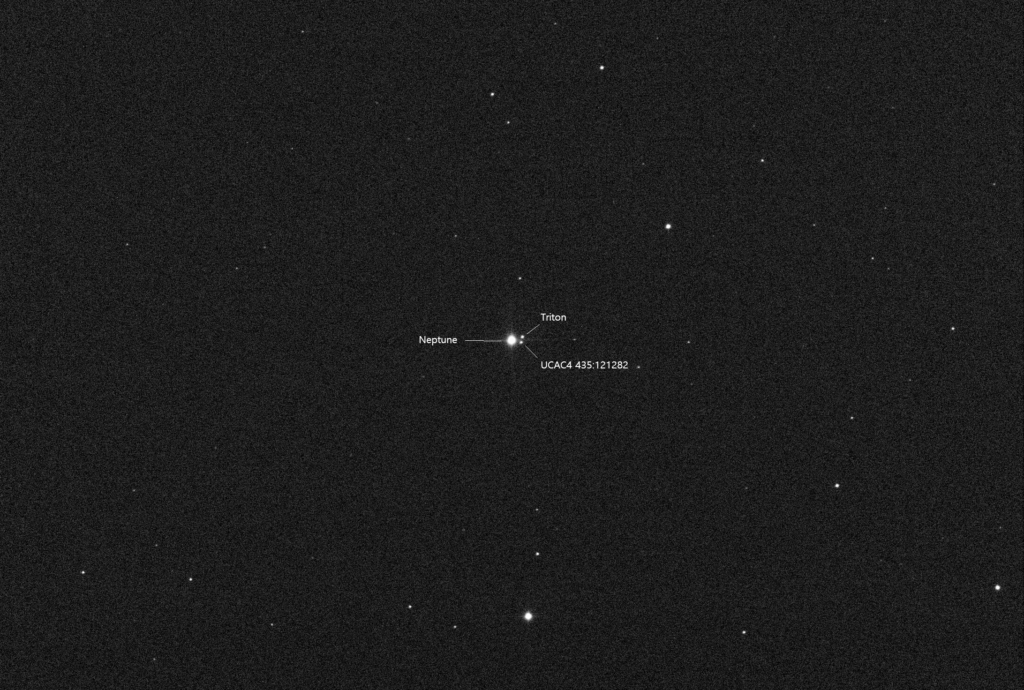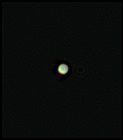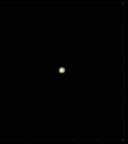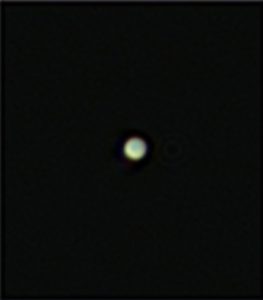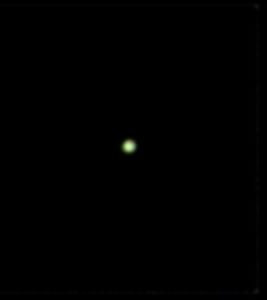I finally got around to processing some non-asteroid data (the weather has not cooperated for several days). I took this image on the evening of the 29th of July.
Even at roughly 3 billion miles Neptune is bright enough that I had to take a short image (5 sec) to prevent over exposure. As indicated, one of the bright objects immediately to the right of the planet is Neptune’s largest moon Triton.
Triton is the 7th largest moon in the solar system (our moon is fifth on the list). Triton is somewhat unique in that it is in a retrograde orbit which supports the current theory that it is likely a captured Kuiper belt object. Imagery taken during Voyager 2’s flyby in 1989 shows a very thin atmosphere and active cryovolcanism in the form of nitrogen geysers.
